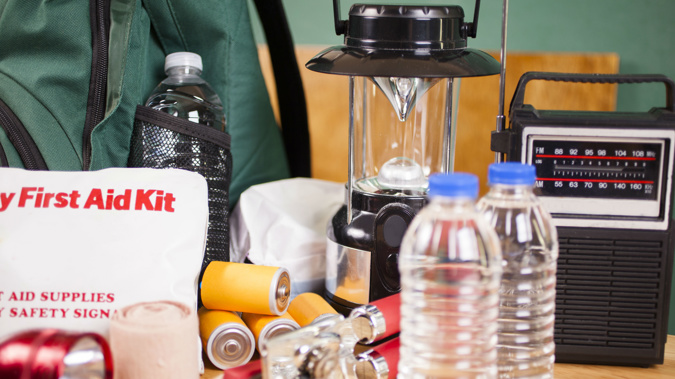
Tropical Cyclone Gita is expected to arrive in New Zealand from Taranaki south to Buller tomorrow evening, with heavy rain beginning tonight.
The category 2 cyclone, which ravaged Tonga and parts of Samoa, southern Fiji and New Caledonia, is now in the Tasman Sea.
Gita is expected to re-curve towards the southeast today and track towards New Zealandwhile transforming into an ex-tropical cyclone bringing wind gusts of over 120km/h, heavy rain and 8 to 9 metre swells.
For the areas right in its path, and wider New Zealand on the cautious side, here are 10 things to do to prepare for the worst:
1. Batten down the hatches.
The Ministry of Civil Defence and Emergency Management has advised people to secure, or move inside, anything that could cause damage in strong winds, as well as closing doors and windows and curtains to prevent injury from breaking windows. Tie down things like trampolines and bring outdoor furniture inside.
2. Clear the drains.
With 100mm of rain expected to fall in many areas, flooding is a real possibility. Check the drains and gutters on your property are flowing freely to minimise the risk. Rivers are also likely to rise quickly in some areas.
TC #Gita will bring strong winds to the lower North Island and upper South Island on Tuesday and Tuesday night.
— NIWA Weather (@NiwaWeather) February 18, 2018
The highest gusts may exceed 110 km/h across Taranaki, Wellington, Tasman, Nelson, Marlborough, and northern Canterbury.
Secure any loose items in your yard! pic.twitter.com/b08YQjlKFf
3. Stay away from the coast.
Coastal areas on the West Coast are in for a battering with 5 to 6 metre northwest swells approaching, combined with gusty winds which were likely to create 8 to 9 metres waves. Sailing, swimming, diving - any activities out in the sea are not recommended.
4. Go over an emergency plan
The Ministry of Civil Defence and Emergency Management has advised people to get together with family or housemates to make emergency plans.
5. Stay inside
Weathering the storm from indoors is the safest approach. With big seas approaching, ocean activities are not recommended, and with potential flooding in the ranges and rapidly rising rivers tramping and camping is also not advised.
6. Pack a getaway kit
In case of evacuation it is a good idea to have some essential items ready to take with you at a moment's notice. Civil Defence Emergency Management has a guide on what to pack here.
7. Prepare emergency supplies
With a risk of power cuts, water outages and road closures, emergency staff recommend people make sure they have enough food and water for three days, essential medications, torches and radios with batteries, car phone charger, baby supplies, camping stove, first aid kit and pet supplies. It might also be a good time to dust off some board games.
Here is the latest track map for #TCGita. Remember, the shading indicates the possible variation in the track and NOT the areas being impacted by the system. Check https://t.co/bcFLKY4OUU for the current Watch areas. ^AG pic.twitter.com/mAmQmHenLo
— MetService (@MetService) February 18, 2018
8. Make sure you have enough fuel
Avoid non-essential travel during the storm, but make sure there is at least half a tank of fuel in your car in case of evacuation.
9. Bring pets inside
People should stay inside and bring pets inside and if they have to leave, take them with them.
10. Stay informed.
Cyclones are notorious for changing track. Stay up-to-date with media and radio coverage for updates from weather forecasters and instructions from emergency services.
Take your Radio, Podcasts and Music with you









